Cineraria: planting, care, growing from seeds
 Cineraria (lat. Cineraria) is the genus in the family Asteraceae, or Compositae. Among the species of cineraria used in the ornamental horticulture there are both representatives of this genus, and the species that belong to the genus Senecio, tribes Senecioneae, the same family Asteraceae. Cineraria genus and Senecio genus are very close.
Cineraria (lat. Cineraria) is the genus in the family Asteraceae, or Compositae. Among the species of cineraria used in the ornamental horticulture there are both representatives of this genus, and the species that belong to the genus Senecio, tribes Senecioneae, the same family Asteraceae. Cineraria genus and Senecio genus are very close.
There are about fifty representatives of the genus Cineraria that can be found in the wild, and according to different data there are from one to three thousand species of senecios. In this article we will tell you about the most popular species of both cinerarias and senecios used in the ornamental horticulture. So, the flowers of cineraria are...
Description of cineraria flower
In Latin the plant’s name means “ashy”. The cineraria plant can be both a sub-shrub and herbaceous plant. Cineraria naturally occurs in Madagascar and in the tropics of Africa. In indoor floriculture only cineraria cruenta, or cineraria hybrida, is used, although in reality it is a hybrid senecio. In the garden floriculture the flower of cineraria is grown mainly as an annual or biennial plant. The height of cineraria is from 12 to 35 inches, the stem is strongly branched, the leaves are large, petiolar, lyrate or oval, many species have pinnatisacted leaves. Both the stems and the leaves are pubescent. The apical corymbose inflorescences consist of single or double head flowers with ray florets of red, white, yellow, purple colors, surrounding the spot of yellow disk florets. Cineraria blooms from mid-June till frosts.
Growing of cineraria from seeds
Cineraria from seeds: sowing
If you want to know how to grow cineraria from seeds, then you should start with the purchase of planting material, and although this is an African plant, in cold climate areas it can be easily grown in the gardens and you can easily find the seeds at the stores. By the way, the germination capacity of the cineraria seeds is very high. Sowing of cineraria to get seedlings is carried out in early April: in a container filled with a mixture of sand and peat in equal parts, sow the seeds of cineraria without burying them into the ground, compact the soil surface with a wooden ruler, then sprinkle water over the soil with the sprayer or bottom-water the soil, cover the container with glass to create a greenhouse effect.
Cineraria seedlings
Usually the cineraria seeds germinate in a week or 10 days, and as soon as the shoots appear, the container is moved to a light place, and when 2 true leaves appear, the seedlings are pricked out into separate containers. The seedlings should be transplanted together with a soil clod, and it is better to plant them into peat soil blocks not to have problems with the further planting of seedlings in the open ground. If you do everything in time and properly, by the time of planting out of seedlings in the garden you will have got well-developed, robust young plants.
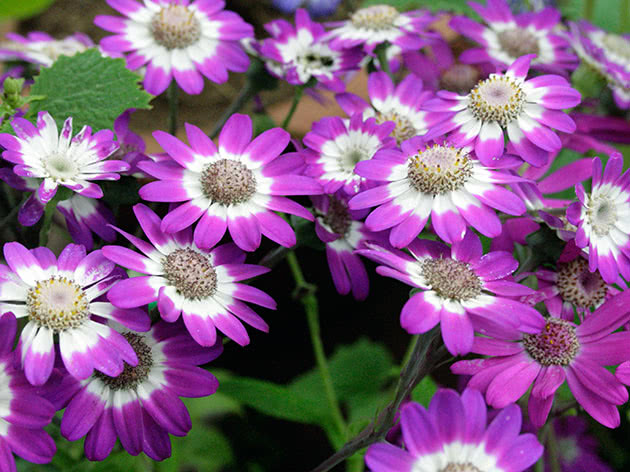
Planting of cineraria
When to plant cineraria
Growing of cineraria is not troublesome, but the more information you have, the easier it will be for you. So, what are cineraria preferences? The light should be bright, but there also should be shade at noon. The soil should be fertile and well drained, slightly alkaline or neutral. If you have a suitable site and the soil has the required hydrogen index, then wait until the middle of May, and when sudden night frosts have passed, plant the seedlings into the open ground.

How to plant cineraria
Planting of cineraria is carried out according to the usual principle: the planting holes should be 8-10 inches apart, the seedlings of cineraria are planted together with the soil in which they grew. After planting, compact the soil and water the site. If you think that the frosts might return, cover the site with garden fabric for the night time.
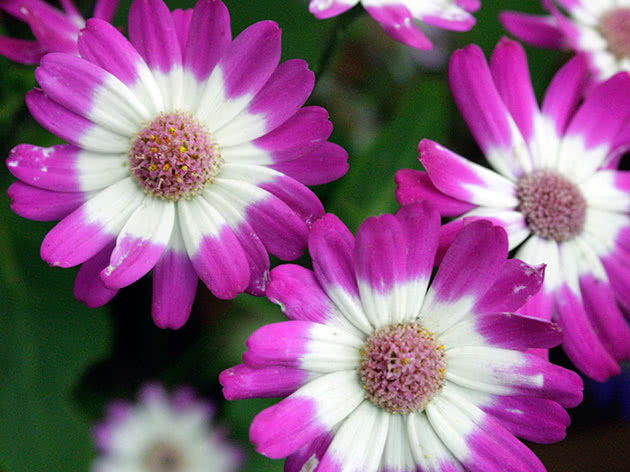
Care of cineraria
How to grow cineraria
Care of cineraria is simple, the main point is an adequate watering. If the plant lacks moisture, it weakens. If there is an excess of moisture, the cineraria roots rot. But almost all species of cineraria are drought-resistant, and usually natural precipitation is enough for it. After rain or watering, you need to remove the weeds and loosen the soil. Timely deadhead the spent flowers as this will prolong the period of cineraria flowering. Feed cineraria with mineral fertilizers two or three times a month. During the budding period ornamental-flowering species are fed alternately with organic and mineral fertilizers each week. The buds of ornamental-deciduous species of cineraria are cut off immediately after their appearance for the plant not to spend strength and nutrition on them. That's all you need to know about caring for cineraria.
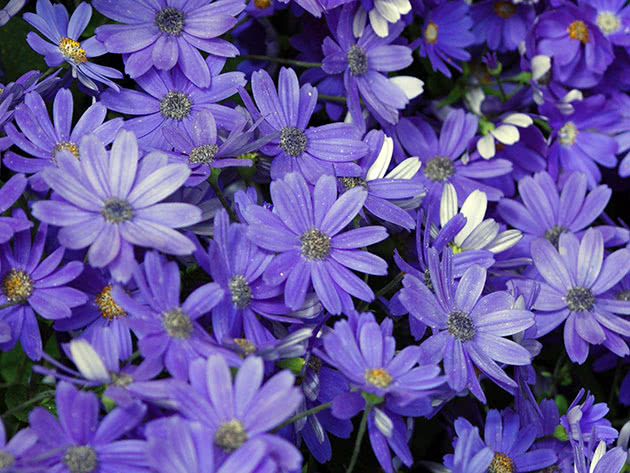
Propagation of cineraria
We have already described seed propagation, but only ornamental-flowering species reproduce by seeds. For ornamental-deciduous varieties, there are vegetative ways of propagation. For example, silver ragwort (Senecio cineraria) is propagated by 4 inch cuttings in summer. To do this you should use a portable box into which you will plant cuttings for rooting. It will be necessary to easily move the box in the garden hiding the cuttings from the full sun at noon. You can make such a box from wooden boards and plywood. At the bottom of the box with drainage holes, a 4 inch layer of mixture of sand and garden soil is placed, then cover it with a 2-2.8 inch layer of coarse river sand, level the surface well, and sprinkle a pink solution of potassium permanganate over the soil. The lower cut of the cutting is treated with a root hormone, then it is immersed into the ground and the soil around it is slightly compacted. Then put a half of the plastic bottle on each cutting, slightly pressing it into the sand, and do not remove this so-called “greenhouse” until the cuttings have taken roots. Water the soil over the top of the bottles every two days, if necessary. When the cuttings have taken root, it will be necessary to remove the plastic bottles every day for one-two hours, preparing them to the conditions in which they are to grow. Then when it is a cloudy, or even better, rainy day, the bottles are taken off at all. In winter cuttings are kept in the box in a cool room, and in spring they are planted out in the ground.
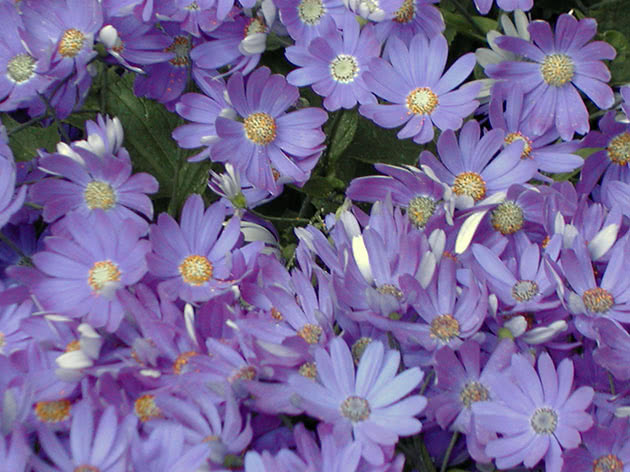
Pests and diseases of cineraria
Sometimes ornamental-deciduous cineraria suffers from rust and powdery mildew (at too high air temperature and humidity), spider mites and aphids. Since the plant is densely covered with thin hairs, it is easier to take preventive measures than to treat the disease. As for insects they are controlled by insecticides. In general, it must be said that all species of cineraria are very resistant to diseases and pests.

Cineraria after flowering
As already mentioned, in cold climate areas cineraria is grown mainly as an annual plant, so after flowering these plants are destroyed. But you can try to keep the ornamental-deciduous species until the next spring. To do this, the bushes are covered with dry leaves in autumn. In spring, having removed the foliage, cut off the frozen branches not to hamper the growth of the young woods. Or there is another way: dig out cineraria, transplant it into the pot and put in a light cool room until spring. In spring, you can plant the overwintered cineraria in the garden.
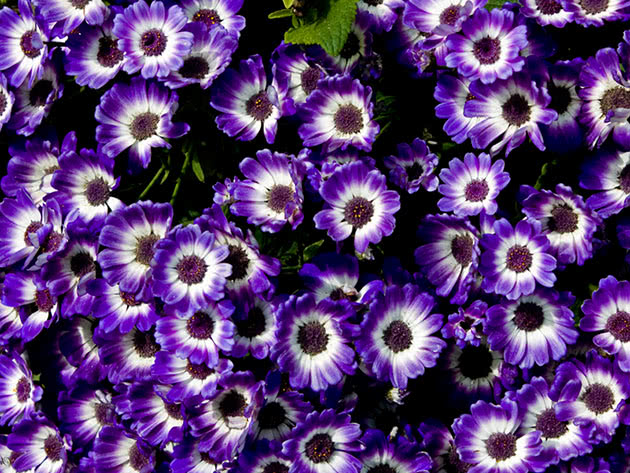
Species and varieties of cineraria
The species of cineraria used in garden floriculture are divided into ornamental-deciduous species, that are mainly grown in the open ground, and ornamental-flowering species, that are mostly used as an indoor culture.
Silver ragwort (cineraria maritima)
or dusty miller plant (Senecio cineraria), is an ornamental-deciduous perennial with a silvery-green foliage. It is widely used in landscape design to create a green background for bright-colored flowers. Sometimes this species is also called “silver dust”. The popular varieties are:
- Silverdust is a low bush with lace leaves;
- Cirrus is a high lush bush with oval toothed leaves.

Hybrid cineraria (Cineraria hybrid)
or florist’s cineraria, or common ragwort, is a bushy ornamental-flowering plant, reaching a height of 11.8 inches or more. The leaves are rounded, large, 4-8 inches long, they are an excellent background for bright flowers, similar to daisies or chamomile. The varieties are:
- Grandiflora is a tall plant, 1.6-2.3 ft in height, the diameter of flower is from 2 to 3 inches;
- Double is a bush, from 1.1 to 2.3 ft in height, the diameter of the flower is up to 2 inches;
- Stellata has the height from 2.3 to 3 ft, the diameter of the flower is from 0.8 to 1.6 inches;
- Sympathy is characterized by a wide range of two-colored variations.
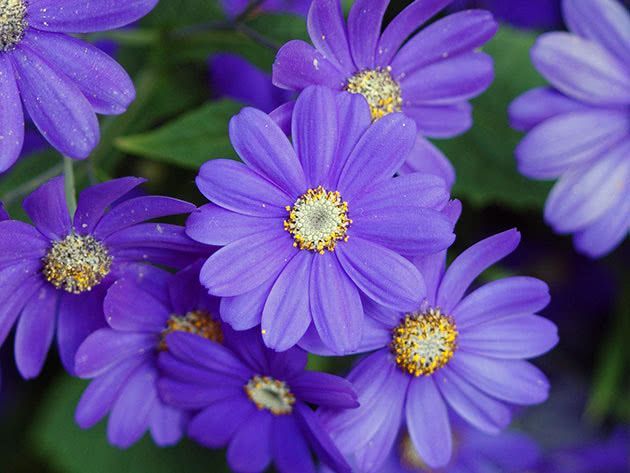
Redpurple ragwort (Senecio elegans)
is a species with a highly branched stem, up to 2 ft high, that is covered with sticky hairs as well as leaves. Flowers are single or double, collected in head flowers that are in turn parts of corymbose inflorescences. It blooms till the frosts. The varieties are:
- Ligulosus is a double cineraria with a wide range of flower colors;
- Nanus is a dwarf plant up to10 inches tall.
